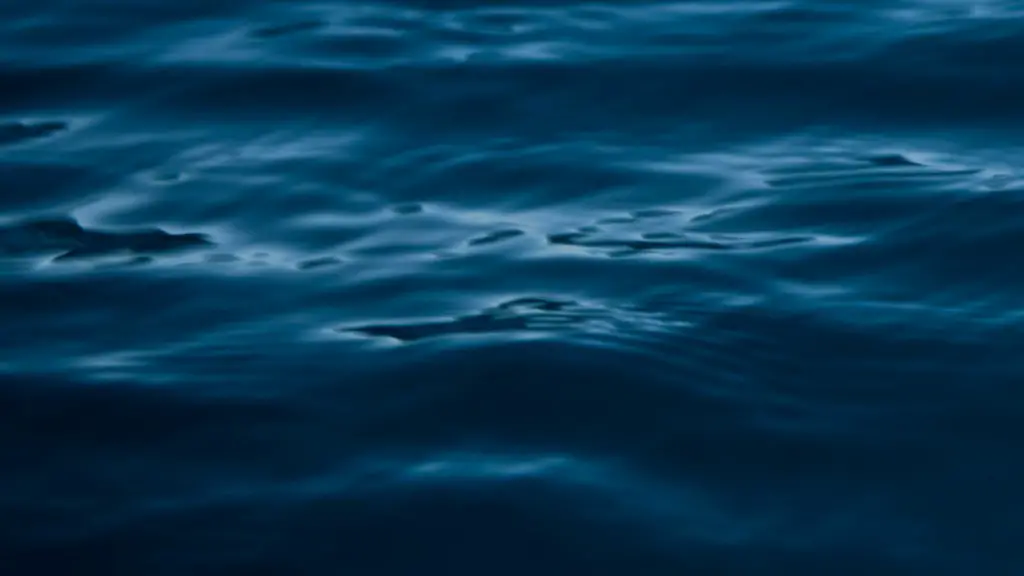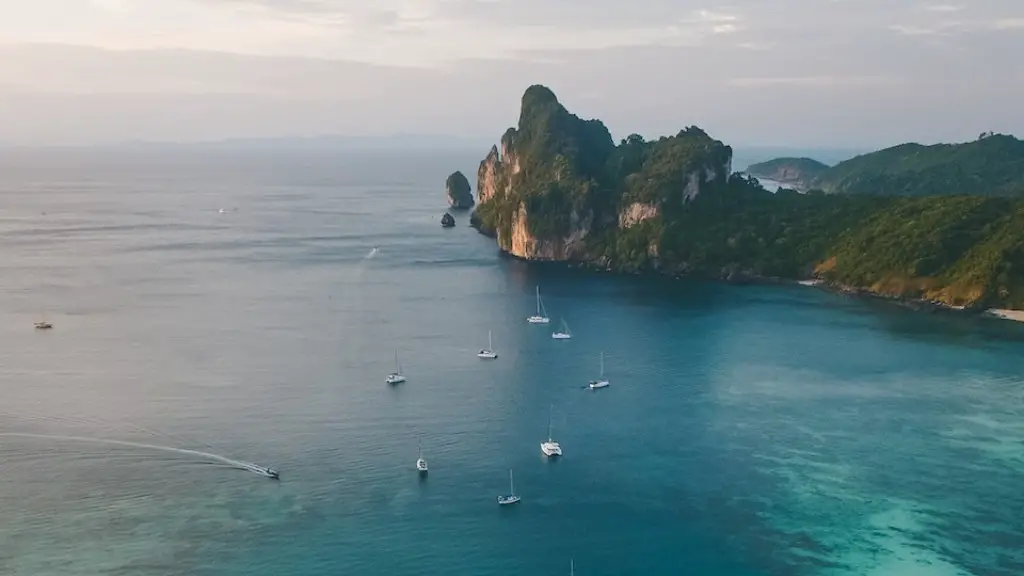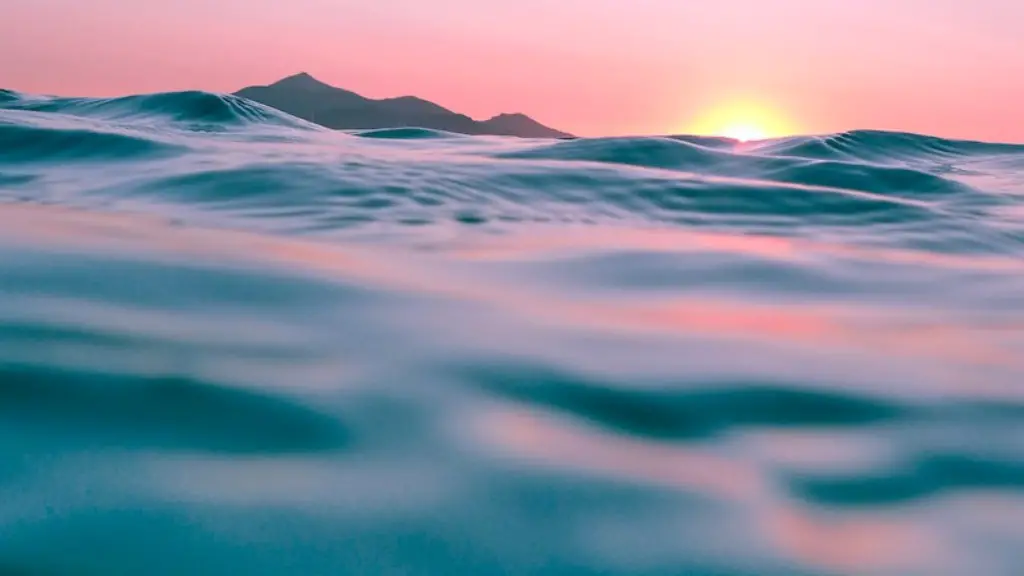The Caribbean Sea is one of the most beautiful and mysterious bodies of water in the world. The Caribbean Sea is located in the western part of the Atlantic Ocean and is a semi-enclosed sea which is surrounded by the Greater Antilles to the north, the Lesser Antilles to the south, and mainland South America to the west. The islands of the Caribbean Sea are among some of the most beautiful in the world, with lush tropical jungles and white sandy beaches. The Caribbean Sea is known for its clear turquoise waters, vibrant marine life and coral reefs. It is also known for its strong trade winds, hurricane-prone weather and diverse cultural influences.
Geographical Features
The Caribbean Sea is actually part of the Atlantic Ocean and has a total area of 2,754,000 square kilometers (1,063,000 square miles). It is bordered by the North American mainland on the west, the islands of the Caribbean on the north, south and east, and Central America and Venezuela on the south. The Caribbean Sea is a shallow body of water, with an average depth of just 2,200 meters (7,200 feet). Its deepest point is in the Cayman Trough, which reaches a depth of 7,686 meters (25,217 feet). The Caribbean Sea is also home to many large islands, with the Greater Antilles being the most well-known. These include Cuba, Jamaica, Hispaniola, Puerto Rico and others.
Climate and Weather
The climate of the Caribbean Sea is tropical, with warm temperatures throughout the year. The temperature of the sea water fluctuates between 25°C (77°F) in the winter and 29°C (84°F) in the summer. The Caribbean Sea is also a hurricane-prone region, meaning that strong storms, hurricanes, and tropical storms are common in the region. These storms can be dangerous and cause destruction to coastal areas.
Marine Life
The Caribbean Sea is home to a wide variety of marine life, ranging from coral reefs to large schools of fish. The coral reefs of the Caribbean are some of the most diverse in the world, providing a habitat for a variety of underwater species. Large schools of fish can be found swimming near the reefs, and there are also a wide variety of larger fish such as sharks, barracudas, and marlins. The Caribbean Sea is also home to several species of sea turtles, dolphins, manatees and whales.
Cultural Significance
The Caribbean Sea has been home to a variety of cultures throughout the centuries. The region was home to the Arawak and Carib Indians who were the first to settle in the region. During the age of sail, the Caribbean Sea became a conduit for trade between Europe, Africa and the Americas. Today, the Caribbean is known for its unique culture, including music, art and cuisine. The Caribbean Sea is also home to a wide variety of languages, with English, French, Dutch, Spanish and Portuguese being the most widely spoken.
Economic Significance
The Caribbean Sea is an important economic resource for the countries that border it. The sea is used for fishing, transportation, and tourism. Fishing is particularly important, as the coral reefs provide a habitat for a variety of fish that are important to local economies. The Caribbean Sea also provides an important shipping lane and is home to many ports and marinas, making it a key hub of international trade. Tourism is a major source of income for many countries in the Caribbean, and the clear waters and beautiful beaches are a major draw for visitors from around the world.
Environmental Significance
The Caribbean Sea is an important environmental resource, as it provides a habitat for a variety of species and is a source of food for millions of people. The coral reefs of the Caribbean are also a major source of biodiversity, and the sea is home to a variety of species, including sea turtles, dolphins, manatees and whales. The Caribbean Sea is also a major source of fresh water, as it is fed by rivers and streams from the mainland and the islands. The Caribbean Sea is vulnerable to pollution, and the health of the sea’s environment is an important concern for local populations.
Tourism Opportunities
The Caribbean Sea is a major tourist destination for people from around the world. The islands of the Caribbean offer a unique mix of cultures and landscapes, from beaches to tropical jungles, and from historic ruins to vibrant cities. Tourism is the largest industry in the region, and many countries are looking to capitalize on this opportunity by developing new resorts and attractions. In addition to traditional beach resorts, there are also opportunities for ecotourism in the region, as the Caribbean Sea is home to many species of animals, plants and coral reefs.
Geopolitical Significance
The Caribbean Sea is a major geopolitical region, with many countries claiming ownership over parts of the sea. The islands of the Caribbean are divided between several countries, while the waters of the sea are mostly divided between the United States and Cuba. In addition, many smaller countries, such as Haiti and the Dominican Republic, are located on the coast of the Caribbean Sea. This has made the Caribbean Sea an important region in world politics, as it is a vital strategic area for many countries.
Maritime Security
Maritime security is an ongoing concern in the Caribbean Sea, as the sea is a hotbed for criminal activity. Drug smuggling, piracy, and illegal fishing are all problems that the region faces. To combat these threats, several countries have established coast guards to patrol their waters and intercept any suspicious vessels. Additionally, the Caribbean nations often cooperate on trade, security, and environmental issues in order to protect the region’s resources.


